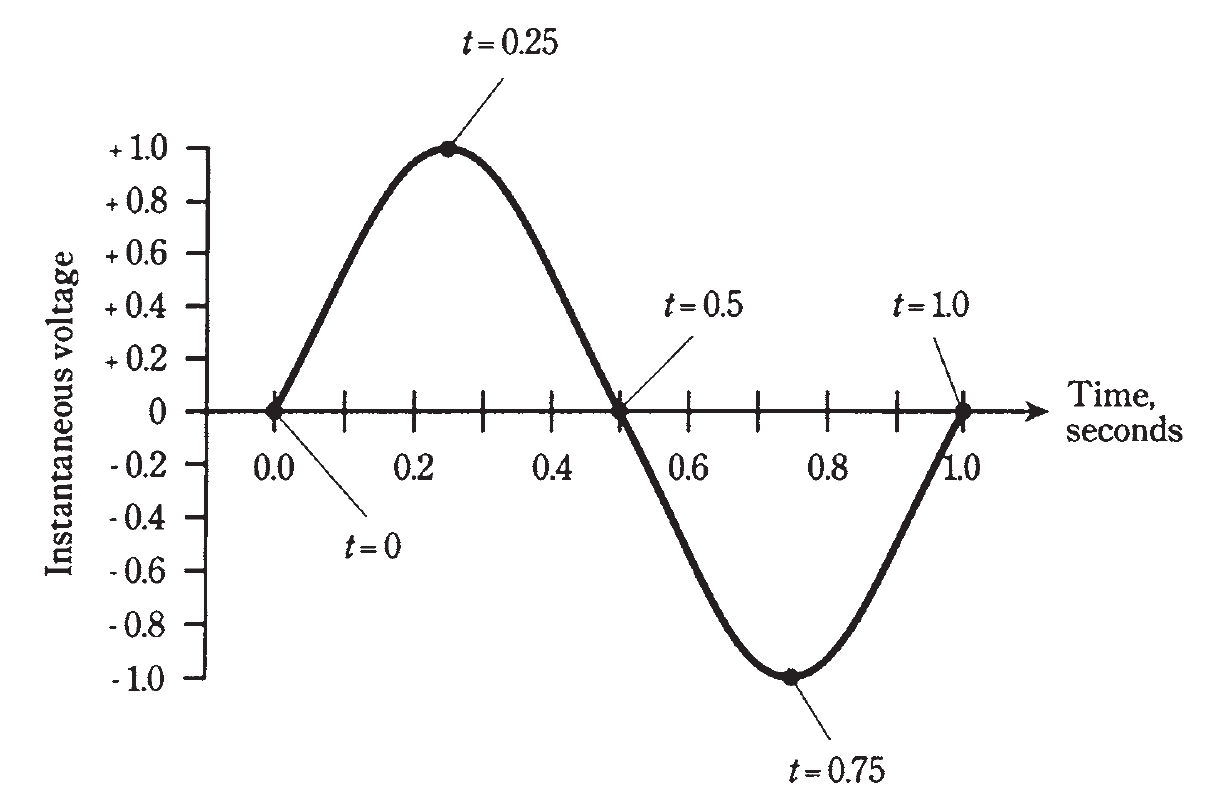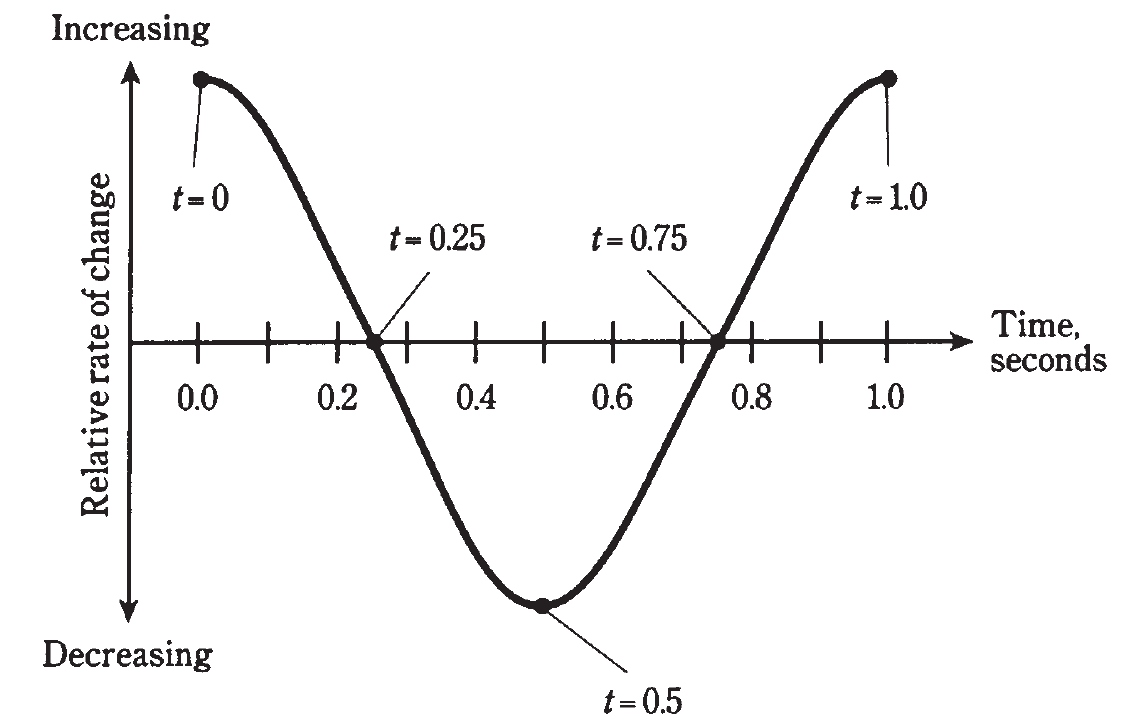


 الفيزياء الكلاسيكية
الفيزياء الكلاسيكية
 الكهربائية والمغناطيسية
الكهربائية والمغناطيسية
 علم البصريات
علم البصريات
 الفيزياء الحديثة
الفيزياء الحديثة
 النظرية النسبية
النظرية النسبية
 الفيزياء النووية
الفيزياء النووية
 فيزياء الحالة الصلبة
فيزياء الحالة الصلبة
 الليزر
الليزر
 علم الفلك
علم الفلك
 المجموعة الشمسية
المجموعة الشمسية
 الطاقة البديلة
الطاقة البديلة
 الفيزياء والعلوم الأخرى
الفيزياء والعلوم الأخرى
 مواضيع عامة في الفيزياء
مواضيع عامة في الفيزياء|
Read More
Date: 29-4-2021
Date: 11-4-2021
Date: 1-5-2021
|
Rate of change
By examining the diagram of Fig. 1, you can see that there are times the voltage is increasing, and times it is decreasing. Increasing, in this context, means “getting more positive,” and decreasing means “getting more negative.” The most rapid increase in voltage occurs when t = 0.0 and t = 1.0 in Fig. 1. The most rapid decrease takes place when t = 0.5.

Fig. 1: A sine wave with period 1 second and frequency 1 Hz.
Notice that when t = 0.25, and also when t = 0.75, the instantaneous voltage is not changing. This condition exists for a vanishingly small moment. You might liken the value of the voltage at t = 0.25 to the altitude of a ball you’ve tossed straight up into the air, when it reaches its highest point. Similarly, the value of voltage at t = 0.75 is akin to the position of a swing at its lowest altitude.
If n is any whole number, then the situation at t = n.25 is the same as it is for t = 0.25; also, for t = n.75, things are just the same as they are when t = 0.75. The single cycle shown in Fig. 2 represents every possible condition of the ac sine wave having a frequency of 1 Hz and a peak value of plus-or-minus 1 V.
Suppose that you graph the rate of change in the voltage of the wave in Fig. 1 against time. What will this graph look like? It turns out that it will have a shape that is a sine wave, but it will be displaced to the left of the original wave by one-quarter of a cycle. If you plot the relative rate of change against time as shown in Fig. 2, you get the derivative, or rate of change, of the sine wave. This is a cosine wave, having the same general, characteristic shape as the sine wave. But the phase is different.

Fig. 2: A sine wave representing the rate of change in instantaneous amplitude of the wave in Fig. 1.



|
|
|
|
"إنقاص الوزن".. مشروب تقليدي قد يتفوق على حقن "أوزيمبيك"
|
|
|
|
|
|
|
الصين تحقق اختراقا بطائرة مسيرة مزودة بالذكاء الاصطناعي
|
|
|
|
|
|
|
العتبة العباسية المقدسة تطلق النسخة الحادية عشرة من مسابقة الجود العالمية للقصيدة العمودية
|
|
|